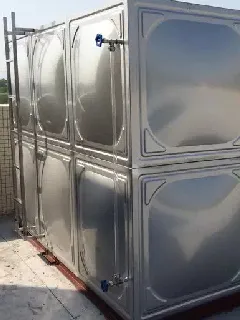loading...
- No. 9, Xingyuan South Street, Dongwaihuan Road, Zaoqiang County, Hengshui, Hebei, China
- admin@zjcomposites.com
- +86 15097380338
- Welcome to visit our website!
grp solid top grating
Understanding GRP Solid Top Grating Applications and Benefits
GRP, or Glass Reinforced Plastic, solid top grating is an innovative material that has gained significant traction across various industries due to its unique properties. This composite material combines glass fibers with plastic resin, resulting in a lightweight yet robust product that offers several advantages over traditional grating materials like steel or aluminum.
Understanding GRP Solid Top Grating Applications and Benefits
Another notable advantage of GRP solid top grating is its lightweight nature. Compared to steel, GRP grating is significantly lighter, which simplifies handling and installation. This quality can lead to reduced labor costs and faster installation times, as workers can easily transport and position the panels without the need for heavy lifting equipment. Additionally, the lighter weight reduces the overall load on supporting structures, which can be an essential consideration in certain construction projects.
grp solid top grating

GRP solid top grating also provides a slip-resistant surface, enhancing safety in various settings. The solid top surface ensures that there are no gaps for liquids to seep through, reducing the risk of slips and falls in areas with high foot traffic or where spills may occur. This slip-resistant characteristic makes GRP ideal for use in walkways, platforms, and industrial settings, where safety is a top priority.
Furthermore, GRP solid top grating is available in a variety of colors and finishes, allowing for customization to suit specific aesthetic or functional requirements. Whether you need a bright color for visibility or a neutral tone to blend with your surroundings, GRP can be manufactured to meet your design preferences. This versatility extends to various thicknesses and load-bearing capacities, ensuring that it can be tailored to the needs of specific applications.
The environmental impact of GRP solid top grating deserves mention as well. Being a composite material, it can be produced with sustainability in mind. Many manufacturers are now focusing on eco-friendly practices, such as using recycled materials in the production of GRP. This shift not only reduces waste but also contributes to a more sustainable approach within the construction industry.
In conclusion, GRP solid top grating stands out as a versatile and practical solution for a wide range of applications. Its resistance to corrosion, lightweight structure, safety features, customization options, and environmental benefits make it an excellent choice for industries such as construction, manufacturing, and transportation. As awareness of the advantages of GRP continues to grow, it is likely to see increased adoption and innovation, shaping the future of grating materials. Embracing materials like GRP solid top grating could lead to improved efficiencies, safety standards, and sustainability in various sectors.
-
The Rise of FRP Profiles: Strong, Lightweight, and Built to LastNewsJul.14,2025
-
SMC Panel Tanks: A Modern Water Storage Solution for All EnvironmentsNewsJul.14,2025
-
GRP Grating: A Modern Solution for Safe and Durable Access SystemsNewsJul.14,2025
-
Galvanized Steel Water Tanks: Durable, Reliable, and Ready for UseNewsJul.14,2025
-
FRP Mini Mesh Grating: The Safer, Smarter Flooring SolutionNewsJul.14,2025
-
Exploring FRP Vessels: Durable Solutions for Modern Fluid HandlingNewsJul.14,2025
-
GRP Structures: The Future of Lightweight, High-Performance EngineeringNewsJun.20,2025
